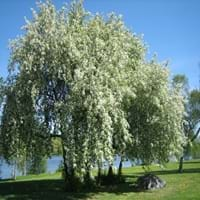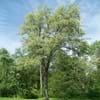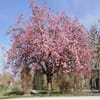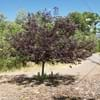Life Span
Perennial
Perennial
Origin
Western Asia
Europe, Russia/Siberia, Asia, Central Asia, China, Japan, Korea
Types
Büttnera Czerwona, Hedelfinger Sweet Cherry
Alabama Cherry, Wild Cherry, Greyleaf Cherry
Habitat
Woodland Garden Canopy
Woodland Garden Canopy
USDA Hardiness Zone
5-8
3-8
Sunset Zone
2a, 2b, 6, 7, 14, 15
A1, A2, A3, 1a, 1b, 2a, 2b, 3a, 3b, 4, 5, 6, 7, 10
Habit
Upright/Erect
Oval or Rounded
Flower Color
Not Available
White
Flower Color Modifier
Bicolor
Bicolor
Fruit Color
Not Available
Purple, Black
Leaf Color in Spring
Not Available
Light Green
Leaf Color in Summer
Not Available
Green
Leaf Color in Fall
Not Available
Green
Leaf Color in Winter
Not Available
Not Available
Leaf Shape
broad, flat
Ovate
Plant Season
Spring, Summer, Fall
Spring
Sunlight
Full Sun, Partial Sun
Full Sun, Partial Sun
Type of Soil
Clay, Loam, Sand
Clay, Loam
The pH of Soil
Acidic, Neutral
Acidic, Neutral, Alkaline
Soil Drainage
Well drained
Average
Tolerances
Not Available
Not Available
Where to Plant?
Ground
Ground
How to Plant?
Semi-hardwood and hardwood cuttings
Seedlings, Stem Cutting
Plant Maintenance
Medium
Medium
Watering Requirements
Water 1 in. per week during the active growing period, Water more in summer
Average Water Needs
In Summer
Lots of watering
Lots of watering
In Spring
Moderate
Moderate
In Winter
Average Water
Average Water
Soil pH
Acidic, Neutral
Acidic, Neutral, Alkaline
Soil Type
Clay, Loam, Sand
Clay, Loam
Soil Drainage Capacity
Well drained
Average
Sun Exposure
Full Sun, Partial Sun
Full Sun, Partial Sun
Pruning
Remove dead branches, Remove thin branches
Pruning during middle of summer, Remove damaged leaves, Remove dead branches, Remove dead leaves, Remove dead or diseased plant parts
Fertilizers
A 10 pound bag of 16-4-8 fertilizer
Apply 10-10-10 amount
Pests and Diseases
Aphids, Borers, Mites
Red blotch
Plant Tolerance
Drought
Not Available
Flower Petal Number
Not Available
Single
Foliage Texture
Not Available
Medium
Foliage Sheen
Not Available
Matte
Attracts
Birds, Flies
Birds
Allergy
Mild Allergen, Vomiting
Pain and fatigue, Respiratory problems, Toxic
Aesthetic Uses
Beautification, Used in parkland
Showy Purposes
Beauty Benefits
Anti-ageing, Good Cleanser, Good for skin, Promotes Healthy Hair
Not Available
Environmental Uses
Air purification
Air purification, Nesting sites for birds, Shadow Tree, Shelter for wildlife
Medicinal Uses
Antitussive, Astringent, Diuretic, Tonic
Anodyne, Diuretic, Febrifuge, Sedative
Part of Plant Used
Fruits, Seeds
Bark, Flowers, Fruits, Leaves, Seeds, Wood
Other Uses
Used for making green dye, Wood is used for making furniture
Used for making dark grey to green dye, Wood is used for cabinet makers
Used As Indoor Plant
No
No
Used As Outdoor Plant
Yes
Yes
Garden Design
Edible, Fruit / Fruit Tree, Shade Trees, Topiary / Bonsai / Espalier
Screening / Wind Break
Botanical Name
PRUNUS avium
PRUNUS padus
Common Name
Sweet Cherry
Bird Cherry
In Hindi
मीठी चेरी
सुंदार वृक्ष
In German
Süße Kirsche
Vogel Kirschbaum
In French
Cerise sucrée
Oiseau Cherry Tree
In Spanish
Cereza dulce
Pájaro Cerezo
In Greek
γλυκό κεράσι
Bird Cherry Tree
In Portuguese
Cereja doce
Árvore de cereja do pássaro
In Polish
Słodka Wiśnia
Czeremcha drzewa
In Latin
dulcis cerasus
Ave Ave ligno
Phylum
Magnoliophyta
Magnoliophyta
Class
Magnoliopsida
Magnoliopsida
Clade
Angiosperms, Eudicots, Rosids
Angiosperms, Eudicots, Rosids
Tribe
Amygdaleae
Acacieae
Subfamily
Amygdaloideae
Prunoideae
Number of Species
Not Available
Importance of Sweet Cherry and Bird Cherry
Want to have the most appropriate plant for your garden? You might want to know the importance of Sweet Cherry and Bird Cherry. Basically, these two plants vary in many aspects. Compare Sweet Cherry and Bird Cherry as they differ in many characteristics such as their life, care, benefits, facts, etc. Every gardener must at least have the slightest clue about the plants he wants to plant in his garden. Compare their benefits, which differ in many ways like facts and uses. The medicinal use of Sweet Cherry is Antitussive, Astringent, Diuretic and Tonic whereas of Bird Cherry is Anodyne, Diuretic, Febrifuge and Sedative. Sweet Cherry has beauty benefits as follows: Anti-ageing, Good Cleanser, Good for skin and Promotes Healthy Hair while Bird Cherry has beauty benefits as follows: Anti-ageing, Good Cleanser, Good for skin and Promotes Healthy Hair.
Compare Facts of Sweet Cherry vs Bird Cherry
How to choose the best garden plant for your garden depending upon its facts? Here garden plant comparison will help you to solve this query. Compare the facts of Sweet Cherry vs Bird Cherry and know which one to choose. As garden plants have benefits and other uses, allergy is also a major drawback of plants for some people. Allergic reactions of Sweet Cherry are Mild Allergen and Vomiting whereas of Bird Cherry have Pain and fatigue, Respiratory problems and Toxic respectively. Having a fruit bearing plant in your garden can be a plus point of your garden. Sweet Cherry has showy fruits and Bird Cherry has no showy fruits. Also Sweet Cherry is not flowering and Bird Cherry is flowering. You can compare Sweet Cherry and Bird Cherry facts and facts of other plants too.





